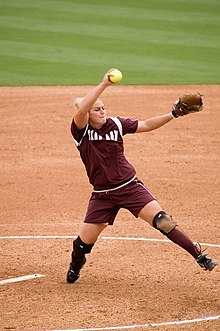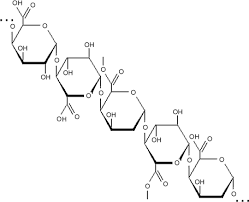So I got a groupon for a box of CSA fruit from a local farm and was inundated with fruit. There were 4lbs of black grapes, 4lbs of bing cherries, 4lbs of rainier cherries, apriums, apples and dried plums. SO MUCH FRUIT! I ate as much fresh as I could, but the grapes started looking sad pretty fast. I did some quick thinking and popped them all on a cookie sheet in the freezer, intending to make them into jam.
 |
| Don't tell them I semi ruined their grapes... :( |
I read the recipe out of a Ball canning book I had, but unfortunately I didn't quite follow it as I should have. But it was an experiment, and I am a scientist, so I used it as a learning opportunity. I started with less sugar than it called for because it sounded as though they were calling for as much sugar as there was fruit, and that seemed absurd. I tested out the frozen plate trick, but didn't trust it as much as I should have, so I just used a candy thermometer and waited (for forty minutes...while the boy was patiently waiting to start a movie with me) for it to get to soft ball stage. BAD IDEA.
 |
| Good for her...baaaaad for jam. |
I poured the jam into the jars, boiled it and let it sit over night. We couldn't watch a movie because it took so long. :( Next morning, I opened one jar...to find grape candy. I had also added more sugar in my impatience...so now it tastes mostly of sugar rather than grapes, which is too bad, because they were really good! I read a bit online and found that you can warm it up and add more water to thin it out (because it really was like soft candy), but it still doesn't taste very good. Way too sweet. So I think I'll make some
jam thumbprint cookies with it. That seems a good fate.
 |
| A good destination for sad jam. |
In any case, I was much more careful with my cherries, which I also couldn't finish fresh. I don't have a cherry pitter, so I plopped down in front of my computer and marathoned some Star Gate while manually pitting all the cherries (all four pounds that were left). Then, in two small batches, I made jam. Delicious, delicious jam.
On to the scientific discoveries!
Discovery #1: Sugar to Fruit Ratio
 |
| Look! It's pectin! |
I did some research on the interwebs and found a consensus that with most of the stone fruits, ones with enough of their own pectin (the stuff in fruits that makes jam gel), you can use half as much sugar as you have fruit and the jam will gel just fine. So that means half the weight: if you have 1lb of fruit, you need .5lb of sugar. I used a scale, too. It seemed more scientific that way. :)
Discovery #2: The Gelling Point
 |
| You gellin'? I am! |
Contrary to my previous belief, this is NOT the same thing as soft ball stage. Noooooo no it is NOT. I can't remember if I read this in the Ball canning book or on a blog, but I discovered that you can calculate the gelling point by boiling a pot of water, adding a thermometer and adding 8 degrees to the final temperature of the boiling water. And you know what, that's a pretty darn good measure!
Discovery #3: The Cold Plate Test
 |
| Frozen spoooooooooon! |
I know, I know...everyone told me to use this and I ignored them. I apologize to the canning community. You win. The way this works, or the way I adapted it, is to put a surface of some sort (plate, spatula, spoon) in the freezer when you start cooking the jam. Then, as it gets close to the gelling point temperature, you put a blob of the jam onto said surface and put it back into the freezer.
 |
| This is the exact picture from the Ball canning book. They lied. |
Why, you might ask? There are some sources that will tell you that as the jam cooks, you can pull your stirring device out of the pot and let the concoction drip off and it should go from quick drips, to less quick drips, to more like sheets/globs. Whoever said this was a dirty, dirty, stinky, rotten liar. A LIAR, I SAY! What they neglected to realize is that this jam is hot. 200 degrees hot. And hot liquids move faster than they do at room temperature. It is this fact that affected my first failure. I was partially waiting for the jam to do said 'sheeting/globbing'. Well...that never happened. Okay, not never, but I had to get it to 225 before it did, and that was too long.
 |
| It won't look like this while you're cooking it, but it will if you put it on a cold spoon. |
So this cold surface test. You put the jam on the surface, wait a short while, take it out and test the temperature. When it's about room temperature, you poke it, or tip it vertical and watch it move, and then pop it in your mouth. The point is to see whether it has adopted prime jam consistency. If you wait till it adopts jam consistency when it's hot...well...you end up with soft fruit candy...like me.
Discovery #4: The Lids...perhaps you shouldn't reuse them
 |
| That red/orange stuff is the...stuff. |
I like to reuse things. And although people told me you shouldn't reuse them, I tried to reuse one lid. I still haven't determine whether the result will happen every time. Being scientific, I must try a few more reuses before my mind is made up, but this one certainly didn't work. The lids have this rubbery...stuff...on them where they contact the jars. The point of this...stuff...is to make a seal to keep the jam in and the air out. MAGIC. This happens when you do the water bath because the hot water heats up the stuff and it squishes around the lip of the jar, sealing it. So the reason you aren't supposed to reuse them is that when the goo gets hot and sits on a jar, it stays in the shape of the jar once it's cooled and it might not hold the seal the next time.. This isn't too bad, it just means you either have to put that jar in the fridge and eat whatever is in it soonish, or use a different lid and re-waterbath it.
I could tell you the tale of the cherries, but I think I'll prolong the suspense. Also, I don't have pictures yet. So there. More next time.
~Amy




No comments:
Post a Comment